How to look healthy. 10 Skin Care Secrets for Healthier-Looking Skin
Discover the top 10 skin care secrets for achieving healthier-looking skin. Get expert advice on skincare basics, acne, eczema, hair loss, psoriasis, rosacea, and more.
Skincare Basics for Healthier Skin
Maintaining healthy, glowing skin requires a dedicated skincare routine. To start, it’s important to cleanse your skin gently and regularly to remove impurities and excess oil. Opt for a mild, non-irritating cleanser that won’t strip your skin. Exfoliating 1-2 times per week can also help slough off dead skin cells and unclog pores.
Moisturizing is crucial to keep skin hydrated and prevent dryness. Look for a moisturizer tailored to your skin type, whether that’s oily, dry, or combination. Don’t forget to apply sunscreen daily to protect your skin from harmful UV rays, which can accelerate aging and increase the risk of skin cancer.
Managing Acne for Clear, Healthy Skin
Acne is a common skin concern that can be frustrating to treat. To combat breakouts, start by keeping your skin clean and avoid picking or popping pimples, as this can worsen inflammation. Over-the-counter acne treatments containing ingredients like salicylic acid or benzoyl peroxide can help dry out blemishes and unclog pores.
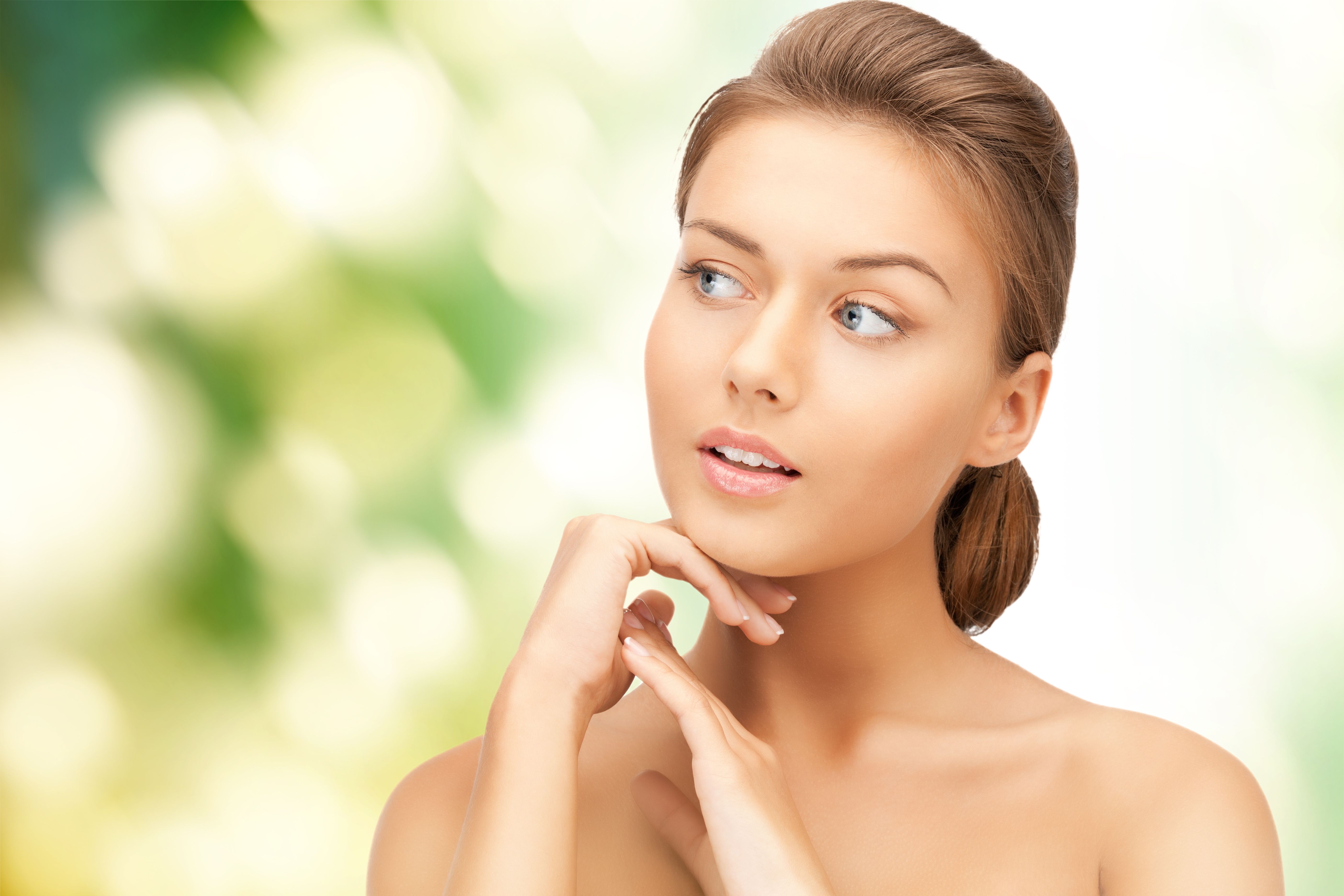
If over-the-counter products aren’t providing sufficient relief, consult a dermatologist. They can prescribe stronger medications or recommend professional treatments like chemical peels or laser therapy to address stubborn acne.
Soothing Eczema and Maintaining Skin Barrier Health
Eczema, or atopic dermatitis, is a chronic inflammatory skin condition that can cause redness, itching, and flaky, dry skin. To manage eczema, use gentle, fragrance-free cleansers and moisturizers to avoid further irritation. Incorporate colloidal oatmeal or ceramide-rich products into your routine to help repair the skin barrier and reduce flare-ups.
If over-the-counter options aren’t enough, ask your dermatologist about prescription topical or oral medications to better control eczema symptoms.
Addressing Hair Loss for Healthier Hair and Scalp
Experiencing hair loss can be concerning, but there are ways to address the issue. Common causes of hair loss include stress, hormonal changes, and certain medical conditions. To support healthy hair growth, gently cleanse your scalp, use a volumizing shampoo, and avoid excessive styling or heat damage.
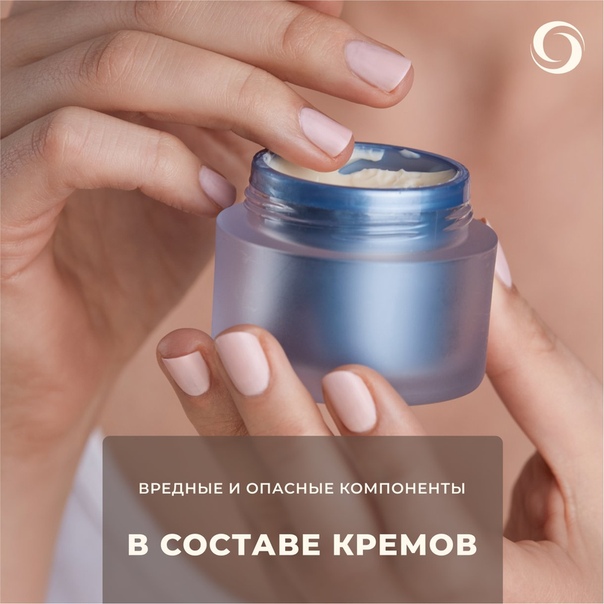
If you notice significant or persistent hair shedding, consult a dermatologist. They can identify the underlying cause and recommend appropriate treatments, such as topical minoxidil or oral medications.
Managing Psoriasis for Clearer, Healthier Skin
Psoriasis is an autoimmune condition that causes raised, scaly patches on the skin. To help alleviate symptoms, use gentle, fragrance-free cleansers and moisturizers, and avoid harsh scrubbing or products that can further irritate the skin.
Topical treatments, such as corticosteroids or vitamin D analogues, can help reduce inflammation and promote skin healing. In more severe cases, your dermatologist may recommend oral or injectable medications to better manage the condition.
Calming Rosacea for a Healthier Complexion
Rosacea is a chronic skin condition characterized by redness, flushing, and visible blood vessels. To soothe rosacea-prone skin, avoid triggers like spicy foods, hot beverages, and excessive sun exposure. Use a gentle, fragrance-free skincare routine and consider incorporating calming ingredients like green tea or niacinamide.

If over-the-counter options aren’t enough, talk to your dermatologist about prescription topical treatments or oral medications to better control rosacea symptoms.
Preventing and Detecting Skin Cancer for Healthier Skin
Protecting your skin from UV radiation is crucial to reduce the risk of skin cancer. Apply a broad-spectrum sunscreen with an SPF of 30 or higher daily, even on cloudy days. Wear protective clothing, seek shade, and avoid tanning beds.
Regularly examine your skin for any new or changing moles or spots, and schedule annual skin cancer screenings with your dermatologist. Early detection is key for successful treatment, so don’t hesitate to have any suspicious lesions checked out.
10 skin care secrets for healthier-looking skin
Diseases & conditions
-
Coronavirus Resource Center
-
Acne
-
Eczema
-
Hair loss
-
Psoriasis
-
Rosacea
-
Skin cancer
-
A to Z diseases
-
A to Z videos
- DIY acne treatment
- How dermatologists treat
- Skin care: Acne-prone skin
- Causes
- Is it really acne?
- Types & treatments
- Childhood eczema
- Adult eczema
- Insider secrets
- Types of hair loss
- Treatment for hair loss
- Causes of hair loss
- Hair care matters
- Insider secrets
- What is psoriasis
- Diagnosis & treatment
- Skin, hair & nail care
- Triggers
- Insider secrets
- What is rosacea
- Treatment
- Skin care & triggers
- Insider secrets
- Types and treatment
- Find skin cancer
- Prevent skin cancer
- Raise awareness
- Español
Featured
How Natalie cleared her adult acne
Natalie tried many acne products without success. Find out how a board-certified dermatologist helped Natalie see clear skin before her wedding.
Find out how a board-certified dermatologist helped Natalie see clear skin before her wedding.
JAK inhibitors: A newer type of medication
JAK inhibitors are helping patients with alopecia areata, eczema/atopic dermatitis, psoriasis, and vitiligo. Here’s what you need to know.
Everyday care
-
Skin care basics
-
Skin care secrets
-
Injured skin
-
Itchy skin
-
Sun protection
-
Hair & scalp care
-
Nail care secrets
- Basic skin care
- Dry, oily skin
- Hair removal
- Tattoos and piercings
- Anti-aging skin care
- For your face
- For your skin routine
- Preventing skin problems
- Bites & stings
- Burns, cuts, & other wounds
- Itch relief
- Poison ivy, oak & sumac
- Rashes
- Shade, clothing, and sunscreen
- Sun damage and your skin
- Aprenda a proteger su piel del sol
- Your hair
- Your scalp
- Nail care basics
- Manicures & pedicures
Featured
Practice Safe Sun
Everyone’s at risk for skin cancer. These dermatologists’ tips tell you how to protect your skin.
These dermatologists’ tips tell you how to protect your skin.
Relieve uncontrollably itchy skin
Find out what may be causing the itch and what can bring relief.
Darker Skin Tones
-
Skin care secrets
-
Hair care
-
Hair loss
-
Diseases & Conditions
- Acne
- Dark spots
- Dry skin
- Light spots
- Razor bumps
- Caring for Black hair
- Scalp psoriasis
- Weaves & extensions
- Central centrifugal cicatricial alopecia
- Frontal fibrosing alopecia
- Hairstyles that pull can cause hair loss
- Acanthosis nigricans
- Acne keloidalis nuchae
- Hidradenitis suppurativa
- Keloid scars
- Lupus and your skin
- Sarcoidosis and your skin
- Skin cancer
- Vitiligo
- More diseases & conditions
Featured
Fade dark spots
Find out why dark spots appear and what can fade them.
Untreatable razor bumps or acne?
If you have what feels like razor bumps or acne on the back of your neck or scalp, you may have acne keloidalis nuchae. Find out what can help.
Cosmetic treatments
-
Your safety
-
Age spots & dark marks
-
Cellulite & fat removal
-
Hair removal
-
Scars & stretch marks
-
Wrinkles
-
Younger-looking skin
Featured
Laser hair removal
You can expect permanent results in all but one area. Do you know which one?
Do you know which one?
Scar treatment
If you want to diminish a noticeable scar, know these 10 things before having laser treatment.
Botox
It can smooth out deep wrinkles and lines, but the results aren’t permanent. Here’s how long botox tends to last.
Public health programs
-
Skin cancer awareness
-
Free skin cancer screenings
-
Kids’ camp
-
Good Skin Knowledge
-
Shade Structure grants
-
Skin Cancer, Take a Hike!™
-
Awareness campaigns
-
Flyers & posters
-
Get involved
- Lesson plans and activities
- Community grants
Featured
Free materials to help raise skin cancer awareness
Use these professionally produced online infographics, posters, and videos to help others find and prevent skin cancer.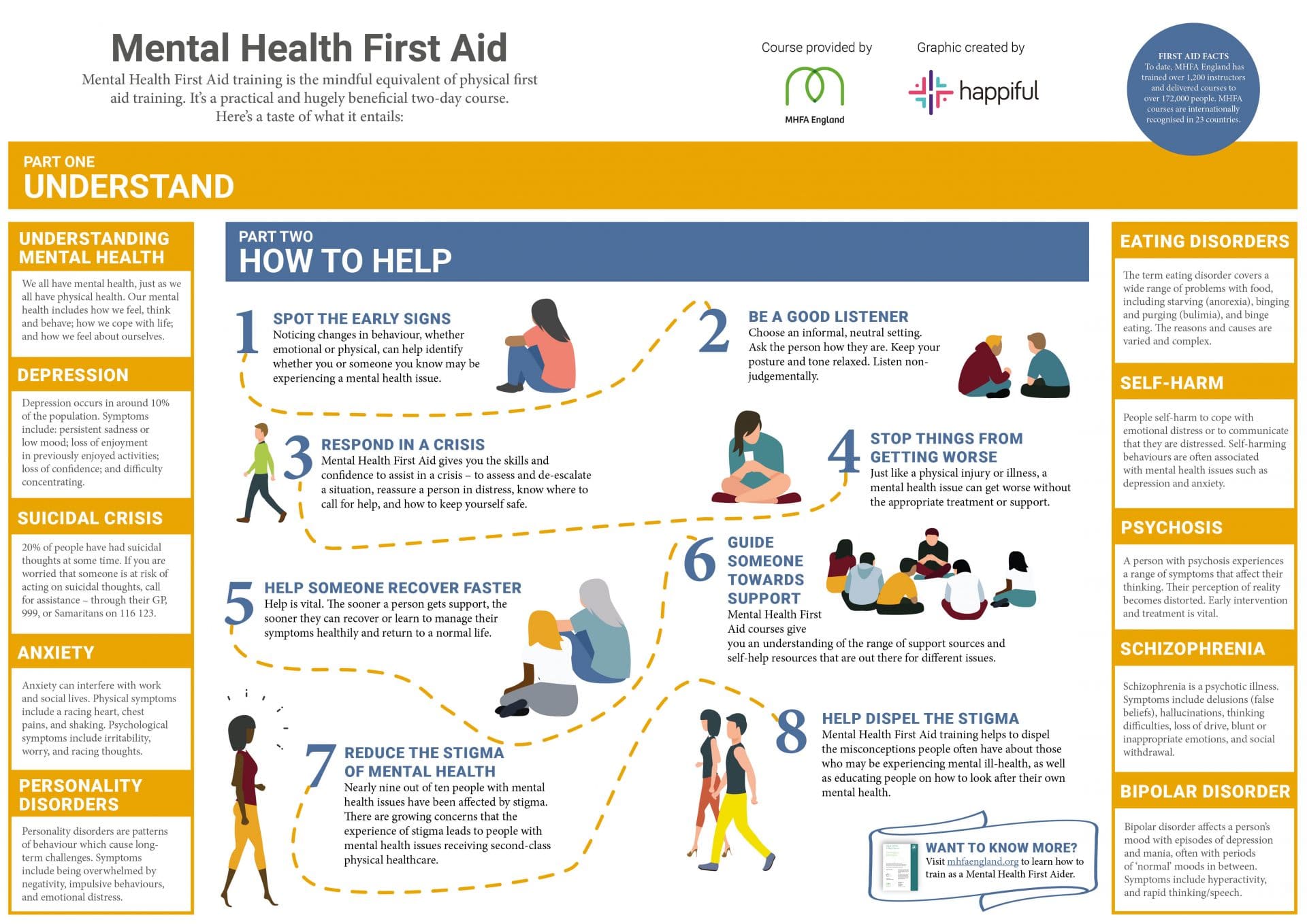
Dermatologist-approved lesson plans, activities you can use
Free to everyone, these materials teach young people about common skin conditions, which can prevent misunderstanding and bullying.
Find a dermatologist
-
Find a dermatologist
-
What is a dermatologist?
-
FAAD: What it means
-
How to select a dermatologist
-
Telemedicine appointments
-
Prior authorization
-
Dermatologists team up to improve patient care
Featured
Find a Dermatologist
You can search by location, condition, and procedure to find the dermatologist that’s right for you.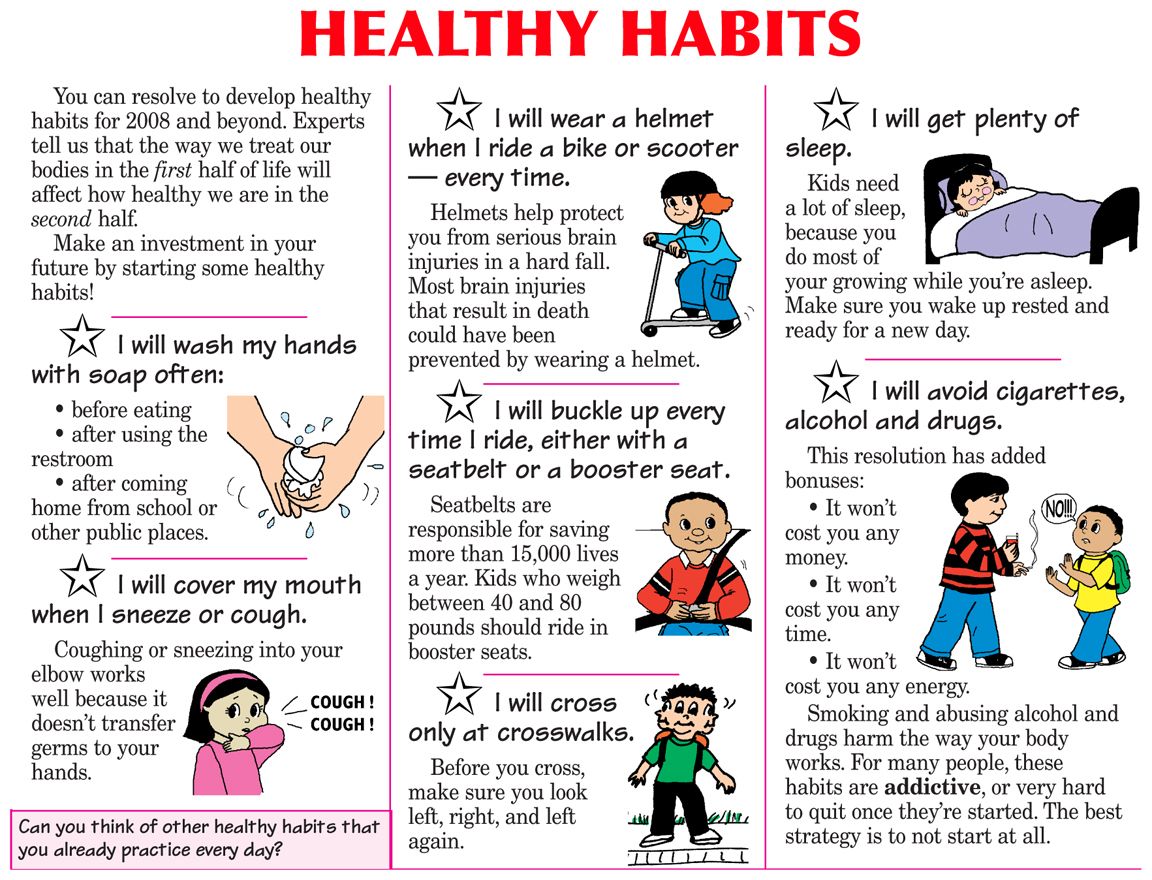
What is a dermatologist?
A dermatologist is a medical doctor who specializes in treating the skin, hair, and nails. Dermatologists care for people of all ages.
How to Look Healthier in One Week
How to Look Healthier in One Week
Jump to
- Main content
- Search
- Account
Search iconA magnifying glass. It indicates, “Click to perform a search”.
US Markets Loading…
H
M
S
In the news
Chevron iconIt indicates an expandable section or menu, or sometimes previous / next navigation options. HOMEPAGE
Science
Save Article IconA bookmarkShare iconAn curved arrow pointing right.
Read in app
Daniel Munoz/Getty Images
Didn’t make it through all of your fitness and diet goals in time for summer? Don’t fret.
There are still plenty of things you can start doing now to start looking and feeling healthier.
Sure, you’re probably not going to wake up looking like an underwear model tomorrow — but you can certainly start feeling better and improving your digestion in a week, according to registered dietitian and nutritionist Andy Bellatti.
Here are a few things Bellatti and other nutritionists recommend.
DO: Drink lots of water.
Flickr/Vlad B.
Water is essential — it regulates the shape of every cell inside our bodies. If we don’t get enough, in fact, these cells begin to shrivel up.
The Centers for Disease Control and Prevention recommends choosing water instead of sugar-sweetened beverages to “help with weight management.” Swapping a cold glass of h3O for a single 20-ounce soda will save you about 240 calories.
So hydrate, Bellatti told Business Insider. “Ideally with water.” Not a fan of the absence of flavor? He suggests spicing it up with a few slices of lemon, lime, or cucumber.
DON’T: Drink only water — or any other beverage.
Dr Smood Cold Pressed Juice on display at Goya Foods Grand Tasting Village
Getty Images/Aaron Davidson
If you’re considering a “detox” or “juice cleanse,” you might want to reconsider.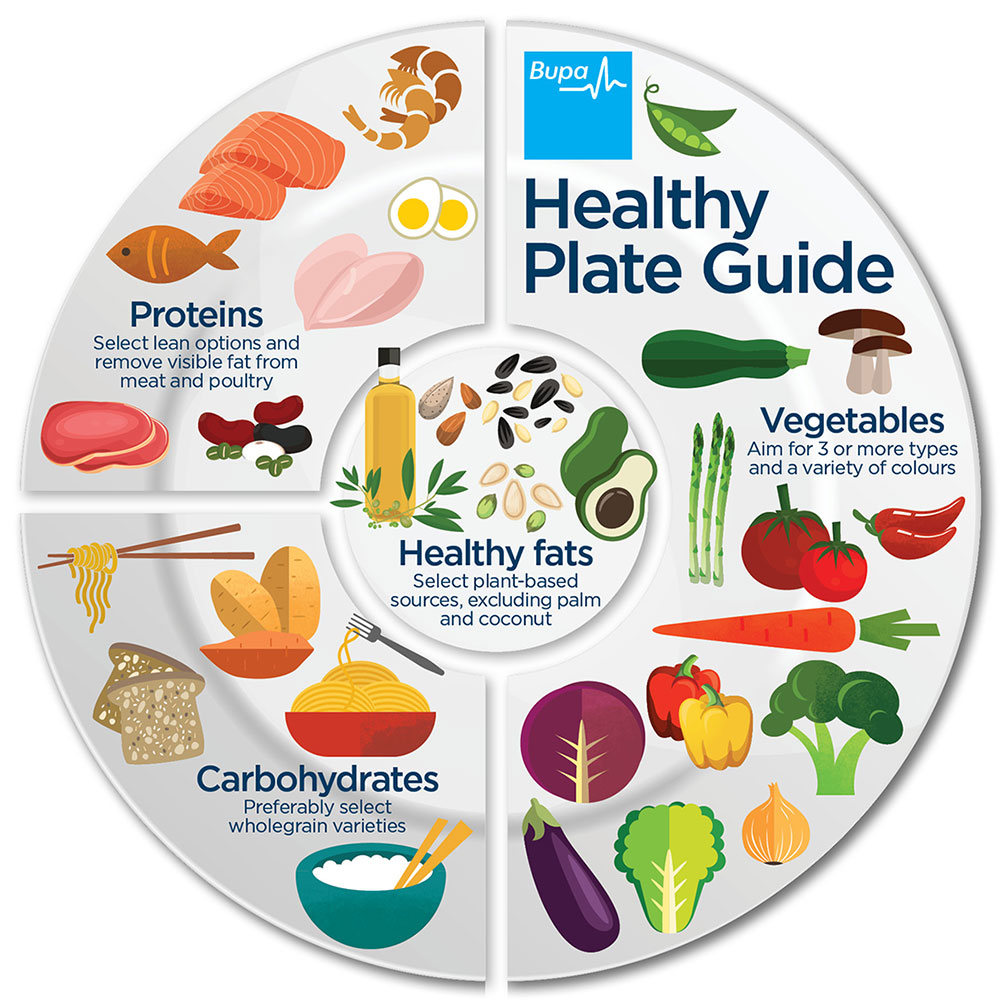 Drinking just water, juice, or any other liquefied concoction for more than a few days can set you up for unhealthy eating behaviors, and can often lead to unhealthy spikes and drops in blood sugar levels, which can spawn cravings and mood swings.
Drinking just water, juice, or any other liquefied concoction for more than a few days can set you up for unhealthy eating behaviors, and can often lead to unhealthy spikes and drops in blood sugar levels, which can spawn cravings and mood swings.
“This is a recipe for ‘hangriness,'” says Bellatti, “that also inaccurately paints all solid food as problematic.”
DO: Cut back on sodium.
Reuters/Thierry Roge
Most of us — 89% of adults, according to the CDC — eat too much sodium, band that’s not including any salt added at the table.
While salt intake remains a hotly debated health topic, eating too much of it is linked with puffiness and bloating, according to Harvard Health. Depending on your diet, cutting back on sodium can be an easy ways to start feeling better.
Depending on your diet, cutting back on sodium can be an easy ways to start feeling better.
“Sodium retains water,” says Bellatti, “so lowering sodium intake also reduces puffiness.”
DON’T: Start banning a bunch of food groups.
Flickr/Ariel Waldman
There’s a difference between cutting back on things you eat in excess and banning certain food groups entirely. Diets that rely on avoiding ingredients (like sugar or gluten) can lead to replacing those things with other ingredients that play the same role in the body (like honey or corn-based foods). Doing this can be dangerous if the replacement products are nutrient-deficient.
Doing this can be dangerous if the replacement products are nutrient-deficient.
DO: Fill up with fiber.
Flickr/halahmoon
Writer Michael Pollan said it best: “Eat food. Not too much. Mostly plants.”
Fresh, high-fiber vegetables like broccoli, bell peppers, and Brussels sprouts — which the CDC actually calls “powerhouse foods” — are a great source of key vitamins and nutrients, including fiber, which helps keep you feeling full and satisfied until your next meal.
“Whole, plant-based foods (fruits, vegetables, whole grains, beans, nuts, and seeds) are best,” says Bellatti.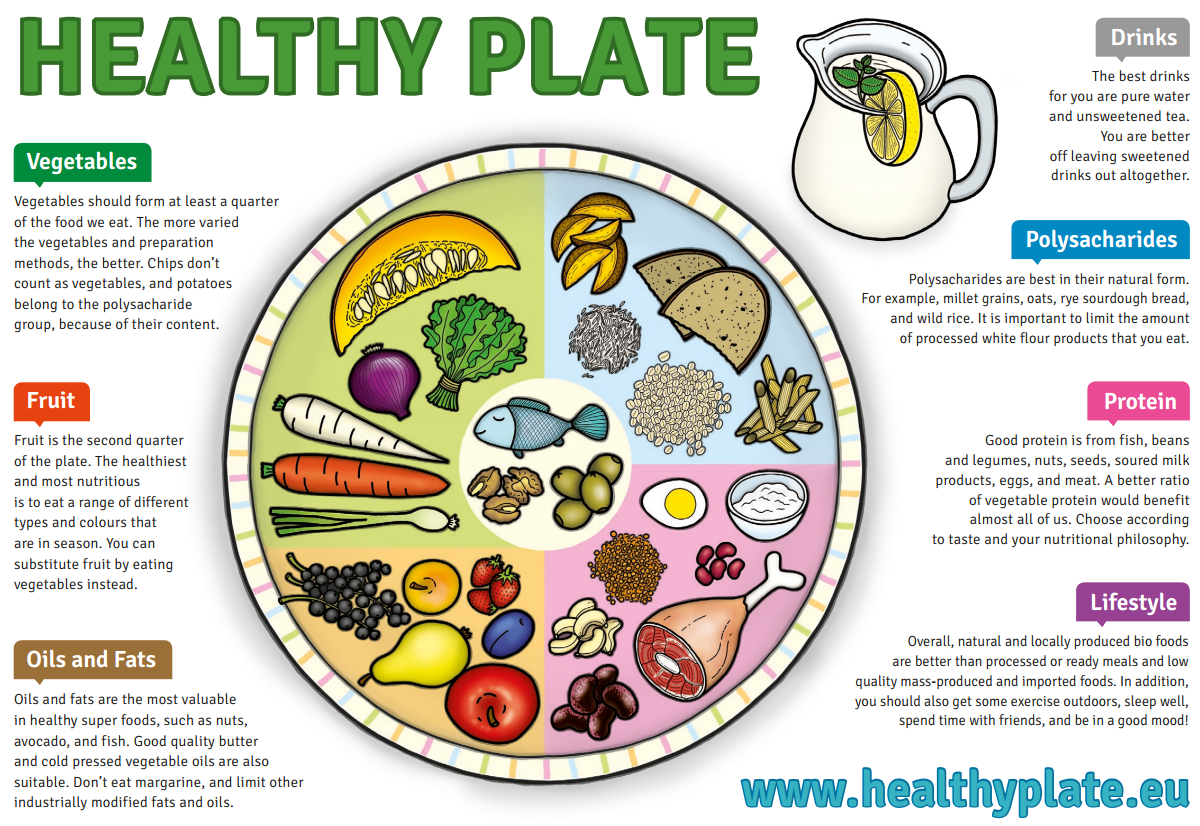 “One quick way to add extra fiber to your day: sprinkle chia, hemp, or ground flax over whatever you’re eating for a boost.”
“One quick way to add extra fiber to your day: sprinkle chia, hemp, or ground flax over whatever you’re eating for a boost.”
DON’T: Rely on powders and pills.
Flickr/Rob Stinnett
The problem with diet powders and pills, says Bellatti, is they often take something that was once a whole food, like a fruit or a vegetable, and then separate and process it for one ingredient. That’s OK for things like cocoa powder, which does have nutrients, but it shouldn’t make up the bulk of your eating regimen.
“When something is a powder, you’re probably using what, a teaspoon or tablespoon at most? And you have to wonder how much that can really do.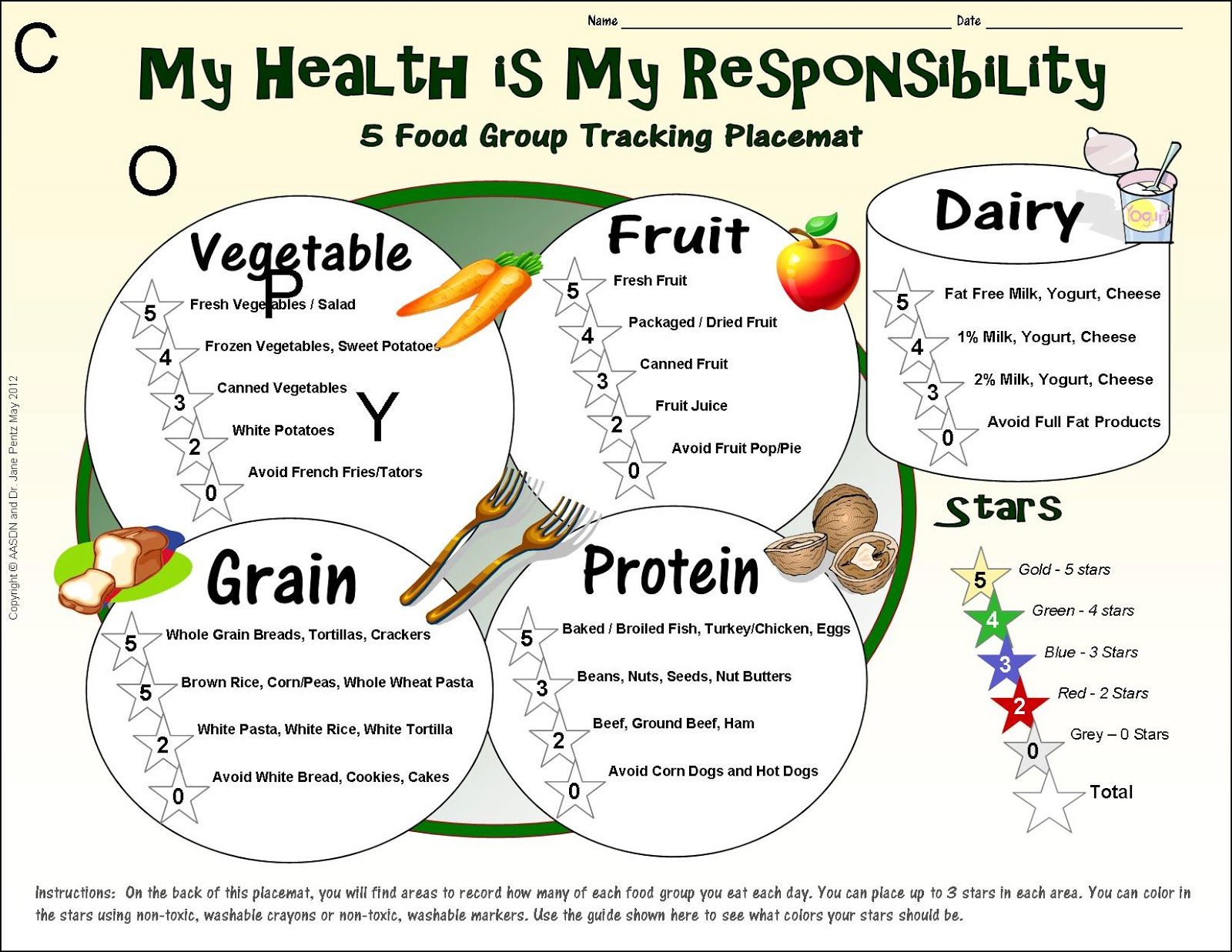 Versus a cup of broccoli or a quarter cup of cashews. That’s something significant,” says Bellatti.
Versus a cup of broccoli or a quarter cup of cashews. That’s something significant,” says Bellatti.
DO: Be mindful of portion sizes.
Flickr/IRRI Photos
The baseline portion sizes of our snacks and meals have ballooned — even the plates and cups we serve them on have gotten noticeably bigger.
The average size of many of our foods, whether its fast-food, sit-down meals, or even items from the grocery store, has grown by as much as 138% since the 1970s, according to data from the American Journal of Public Health, the Journal of Nutrition, and the Journal of the American Medical Association.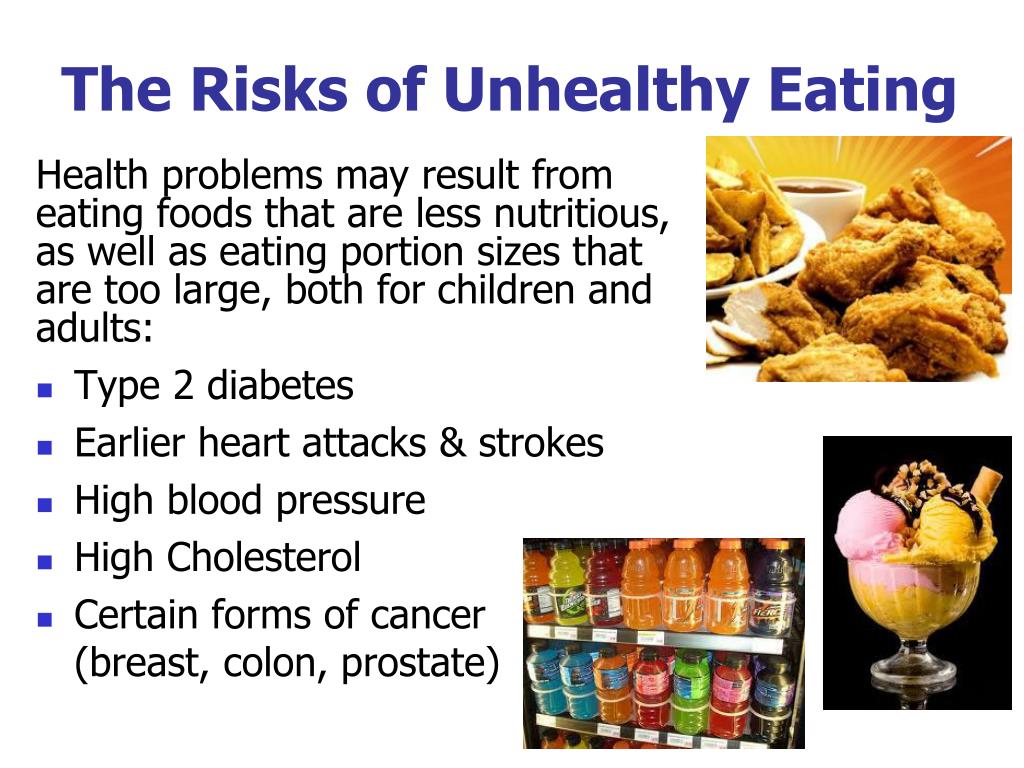
So be mindful of portion sizes, and if you’re eating out, consider taking some of your meal to-go for later.
DON’T: Focus exclusively on calories.
Flickr / Ian T. McFarland
That said, focusing exclusively on calories can be dangerous too.
“This is especially true when eating at restaurants,” says Bellatti. “Many low-calorie items are loaded with sodium, which retains water and can leave you feeling bloated.”
Plus, keep in mind that for sustained weight loss, you’re only supposed to lose about 1-3 pounds each week, Philip Stanforth, a professor of exercise science at the University of Texas and the executive director of the Fitness Institute of Texas, told Business Insider. “That tends to be a lot more sustainable than losing a whole bunch at once,” says Stanforth.
“That tends to be a lot more sustainable than losing a whole bunch at once,” says Stanforth.
DO: Think positive.
Shutterstock
Thinking positively about eating and feeling better can help motivate some people to stick to a new lifestyle.
“In terms of changing the way you eat (it’s much more than a ‘diet’), focus on the opportunities and what you can eat as opposed to what foods you’re trying to cut down on,” Dr. Donald Hensrud, who chairs the Mayo Clinic’s division of preventive, occupational and aerospace medicine writes in a blog post for the Clinic. “There are many wonderful foods and recipes to explore, and believe it or not, we can learn to like new foods.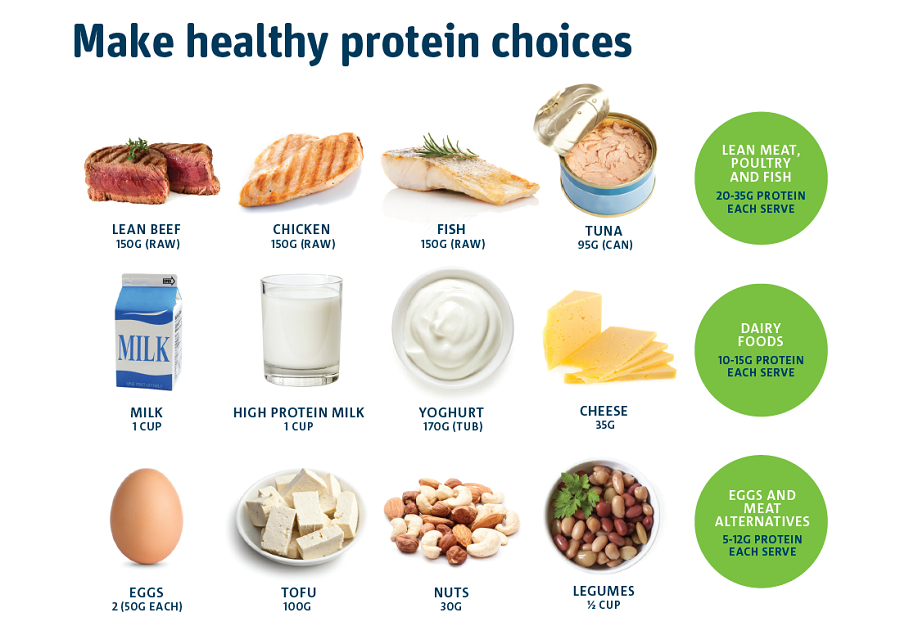 “
“
DON’T: Expect miracles.
HBO
Let’s be real: Eating right for a week isn’t going to counteract decades of subsisting on fries and Frappuccinos. But it is enough to reduce some of the more irritating aspects of those symptoms — the bloating linked with a high-salt diet, the fatigue associated with blood sugar crashes.
“The most that can happen in a week’s time is that you make choices that help reduce bloating and puffiness. Any promises beyond that are more about marketing and hyperbole than anything else,” says Bellatti.
More important, though, committing to treating your body well (if even only for a few days) might be enough to lay the foundation for months or years of future healthy eating. If you can prove to yourself that you can treat your body right (and that it feels good to do so!) you just might be more likely to keep doing so later on.
If you can prove to yourself that you can treat your body right (and that it feels good to do so!) you just might be more likely to keep doing so later on.
Read next
LoadingSomething is loading.
Thanks for signing up!
Access your favorite topics in a personalized feed while you’re on the go.
Health
Diet
Weight Loss
More.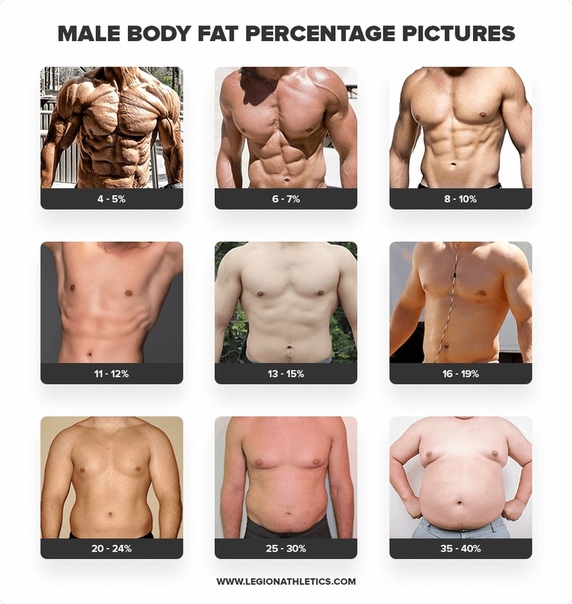 ..
..
How to look and feel good every day: simple secrets of healthy people
Health
Unraveling the secret of a healthy lifestyle for many seems to be a task more difficult than blowing up the Death Star. We asked the experts how they manage to feel 100% and got brilliant tips that you can follow without spending money, working with a personal trainer or eating foods with unpronounceable names five times a day.
move more
News: Exercise has a positive effect on general physical condition and increases emotional tone. Wait, this is not news for a long time. But we forget that we also need to be active during the day: research by scientists from the University of Boston shows that ten minutes of physical activity a day brings as many benefits as regular exercise in the gym.
“Keeping a healthy lifestyle does not mean sweating profusely in the gym. I tell you this, the man who owns a chain of fitness centers, ”Pip Black, co-founder of Frame, shares the secret.
HOW TO START?
Take a fresh look at daily activities: “I ride my bike to business meetings, and I take my son to kindergarten on a scooter – it makes me feel much more alert during the day,” Black says.
Vary your speed as you walk from point A to point B: Studies show that walking at different speeds burns 20% more calories than walking.
add spices to food
Spices are used not only to enhance the taste of dishes, but also to stimulate certain body functions. A super-ingredient that can affect the condition of the whole body is turmeric.
“I add turmeric to my rice milk in the morning,” says nutrition expert Madeleine Shaw.
SPICE MILK: 140 ml milk, 1/4 tsp. turmeric, 1/2 tsp. cinnamon, 1 tsp fresh grated ginger
cooking method
- Pour the milk and spices into a small saucepan and heat over medium heat for three minutes.

- If you want to speed up your metabolism, add finely chopped chili peppers, and cumin to boost immunity (it also regulates cholesterol levels).
- Add fenugreek to your drink to lower your blood sugar.
turn off electronic devices at night
“Blue light from mobile phones, TVs, and computers inhibits the production of melatonin (sleep hormone), which prevents us from falling asleep and makes us feel overwhelmed in the morning,” says somnologist Dr. Charlotte Kemp . 95% of people who text or watch TV in bed suffer from poor quality sleep, risking obesity, heart disease and diabetes.
HOW TO START?
“I remove all gadgets from my bedroom so I don’t have to check email or Facebook again,” says Dr. Kemp. If you are one of those 54% of women who wake up at night, start keeping a diary where you can write down all your experiences before going to bed. This way you will calm down and be able to deal with problems in the morning.
squat
Cardio is overtaking any other workout in popularity, but strength exercises such as squats and weight lifting are also very important. “Strength and muscle mass are the two main biological markers of health,” says Joslyn Thompson Rule, Nike coach. Strength training helps prevent diabetes and arthritis, while also maintaining muscle mass and boosting your metabolism.
“Strength and muscle mass are the two main biological markers of health,” says Joslyn Thompson Rule, Nike coach. Strength training helps prevent diabetes and arthritis, while also maintaining muscle mass and boosting your metabolism.
HOW TO START?
For squats, place your feet slightly wider than your hips. Evenly distribute the weight between the legs, sit down as if sitting on a chair, and straighten up, tensing the muscles of the buttocks. If you’re good at squats, add jumping jacks (burpee exercise) – they strengthen the heart, increase stamina, improve coordination and actively burn calories.
Meditate
From CEOs to celebrities like Lena Dunham and Emma Watson, more and more people are turning to meditation. It is a universal tool for achieving harmony, according to meditation master Jody Shield. “You can meditate at any time – completely free of charge, and it will help you get rid of fatigue and unpleasant emotions.”
HOW TO START?
We are all very busy, but 10 minutes a day is enough. During lunch, turn off your laptop, close your eyes, and take a deep breath. Imagine that you are looking directly at the point between your eyes (third eye). It sounds strange, but it helps to reset the brain and relieve stress.
During lunch, turn off your laptop, close your eyes, and take a deep breath. Imagine that you are looking directly at the point between your eyes (third eye). It sounds strange, but it helps to reset the brain and relieve stress.
watch your posture
When we were kids, it always annoyed us when our parents said, “Sit up straight!” But it turns out that poor posture can cause headaches and even affect our mood. “Posture is the foundation of health,” says Senior Physical Therapist Janani Wijetung. “I meet many people, especially office workers, who suffer from chronic back pain, and the reason is poor posture.”
HOW TO START?
“You can’t spend more than 20 to 30 minutes in one position, so take breaks and exercise,” says Widgetung. – Walk or stand for a couple of minutes, stretch your neck, shoulder blades, rotate your body. Repeat each exercise two or three times, holding the stretch for 20 seconds.”
make time for yourself
A study of 3,000 people found a link between self-restraint and four key health indicators: appetite, performance, stress tolerance and good sleep. “It has to do with emotional flexibility,” says Dr Katherine Green, a clinical psychologist at the British National Committee Health Foundation in South London. “It’s about accepting challenges and difficult situations, not avoiding them.”
“It has to do with emotional flexibility,” says Dr Katherine Green, a clinical psychologist at the British National Committee Health Foundation in South London. “It’s about accepting challenges and difficult situations, not avoiding them.”
HOW TO START?
If you feel sad or insecure, Dr. Green suggests using the following technique: “Talk to yourself like you would a best friend. What would you ask him? How cheered up?
combine meals
Studies by scientists from the University of Texas have shown that high sugar intake can lead to breast cancer. Time to limit yourself in the sweet. But how? Add more healthy ingredients so you don’t need it. “I have a sweet tooth, so I eat dates and pecans so that I don’t suffer from the desire to eat chocolate,” says Irene Arango, co-founder and chef at London-based raw food restaurant Nama.
HOW TO START?
Arango suggests using date paste, vanilla powder, raw cocoa, coconut sugar, cinnamon and bananas to sweeten coffee, smoothies and pies.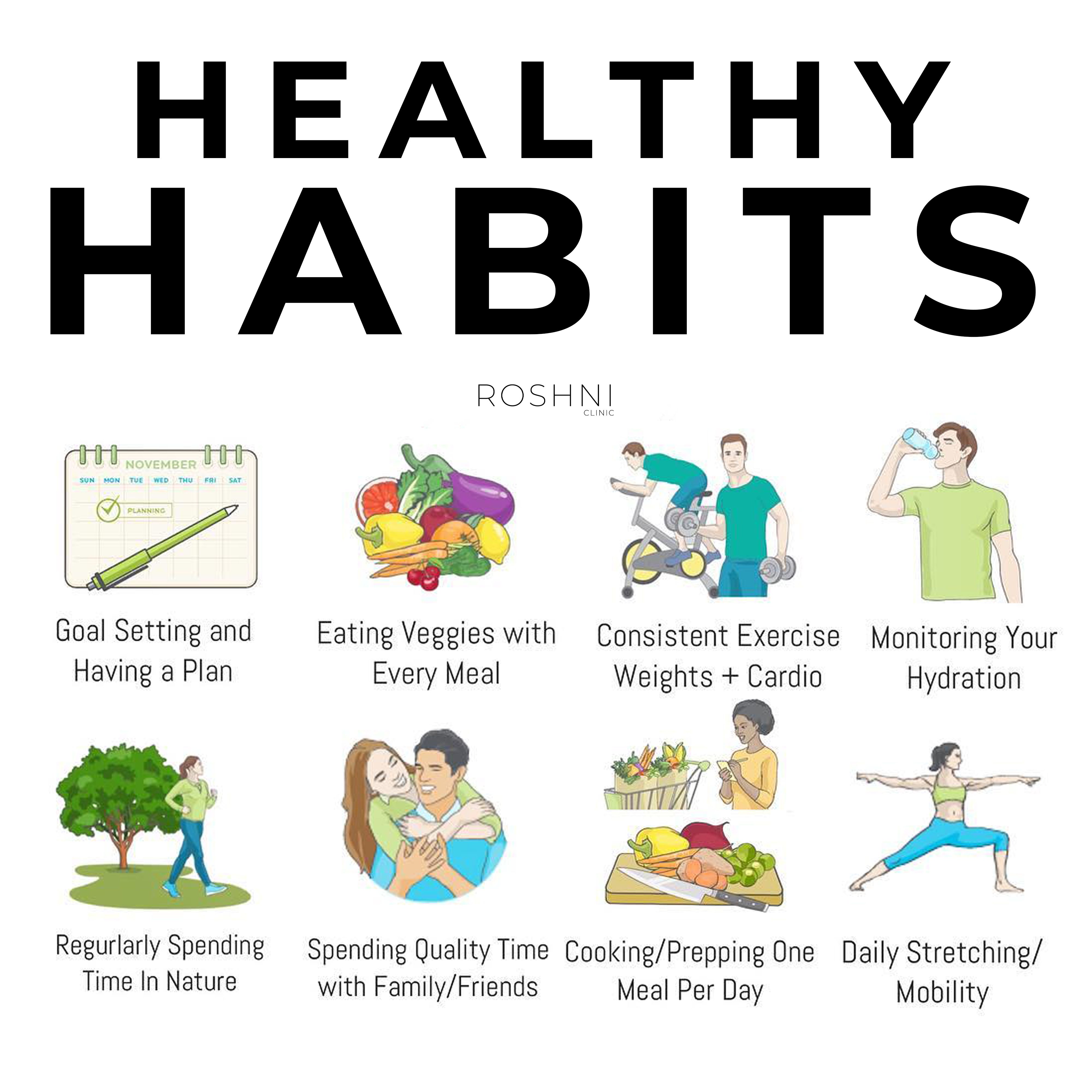 “Plus, I’m stocking up on energy bars with dates, almonds, and protein so I can indulge in some healthy sweetness. Another tip is to replace the main meal with a salad with cucumbers, sun-dried tomatoes and sunflower seeds, and then eat a normal lunch, but a smaller portion.
“Plus, I’m stocking up on energy bars with dates, almonds, and protein so I can indulge in some healthy sweetness. Another tip is to replace the main meal with a salad with cucumbers, sun-dried tomatoes and sunflower seeds, and then eat a normal lunch, but a smaller portion.
take vitamin B3
More than 50% of adult women suffer from rashes. Skin care should be complex, but only one vitamin, B3, can specifically deal with this problem. It controls sebum production and reduces inflammation. Add 750 mg of vitamin B3 to your daily diet.
HOW TO START?
“Good skin means a healthy life,” says dermatologist Anjali Mahto. – I wash my face with micellar water and use a cream with SPF, but I break down if I don’t sleep or I’m nervous a lot, so I actively practice yoga and meditation. Retinoid cream at night can also help. It removes pigmentation and evens out the skin. I don’t think there is a female dermatologist in the world who wouldn’t use it.”
practice yoga
Everyone knows the benefits of yoga, but new research has shown that just 12 minutes of yoga a day can improve bone quality, reducing the risk of osteoporosis.
HOW TO START?
How to become a good yogi? “Stretch everywhere and on everything (walls, tables) throughout the day. It’s one way to stay flexible,” says international yoga instructor Irene Pappas, known for her Instagram account @fitqueenirene with 500,000 followers.
Try this stretch: Stand facing a wall at your feet’s length, feet parallel and hip-width apart. Place your hands on the wall just below the line of your shoulders and lower your chest through your hands, forming a right angle. Relax your neck, keep your shoulders tense. You can bend your knees slightly or keep them straight. Stay in this position for 10-15 breaths and repeat whenever you feel like you need a release.
TagsHow to feel goodHow to become healthyHow to become healthierHow to look good every day
How to look beautiful without makeup: tips and hacks
You don’t have to spend time on makeup – you can look great without it! If you follow simple rules.
Tags:
beauty
Skin care
Massage
Hair color
peeling
Skillfully applied make-up helps hide skin imperfections and emphasize facial features. This is what women have been doing for centuries and millennia.
This is what women have been doing for centuries and millennia.
But what if you learn how to look beautiful without makeup? Take proper care of your skin, hair and choose your wardrobe wisely. Our advice will help you not to be afraid to take a step without cosmetic tricks and expensive things. We propose to take into account the nuances, the work on which will make you attractive at any time of the day.
1. Do your eyebrows
Eyebrows should be of the correct shape, suitable for your face shape and eye shape, and also tinted in the salon with permanent paint. With such well-groomed curves, you will be able to be beautiful without makeup. They will transform the face and will not constantly require a pencil or mascara. Just comb them with a brush and you’re done!
2. Choose clothes in the right shade
If you choose the color of your clothes wisely, you can easily make your face look fresher, skin tone healthy, and overall look rested.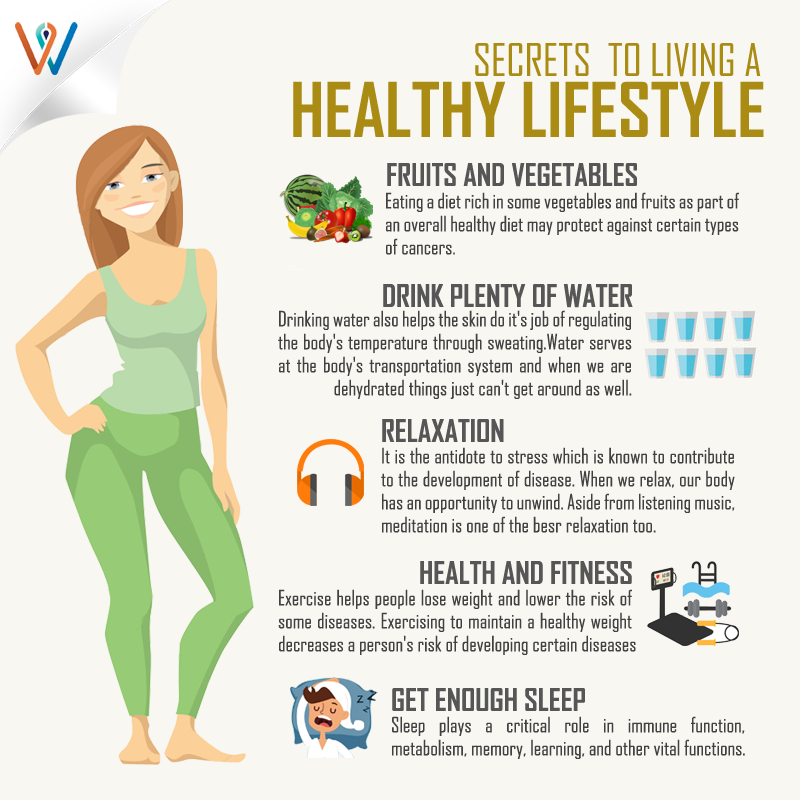 Accordingly, you can look beautiful even without applying makeup. Recommendations are simple:
Accordingly, you can look beautiful even without applying makeup. Recommendations are simple:
ADVERTISING – CONTINUED BELOW
- If you are a white-skinned blonde, choose pastel warm shades.
- If you’ve been tired lately, haven’t been getting enough sleep and your face looks sickly pale, while your hair color is from blond to dark blond, choose cold shades of pink, yellow or red, shading them with contrasting white.
- If you are a brown-haired woman, to be beautiful and without makeup, pay attention to warm shades of gray, sea blue, wine and emerald green.
- And if your type is light skin and dark hair, then your win-win option is any combination of black and white.
3. Watch your hair
Scruffy hair makes any look look messy. How beautiful you can look without makeup and without styling at the same time! Do not allow the formation of a shapeless shock on your head. Trim split ends regularly, wash your hair more often (more precisely, as needed), do not let your hair fluff and become electrified.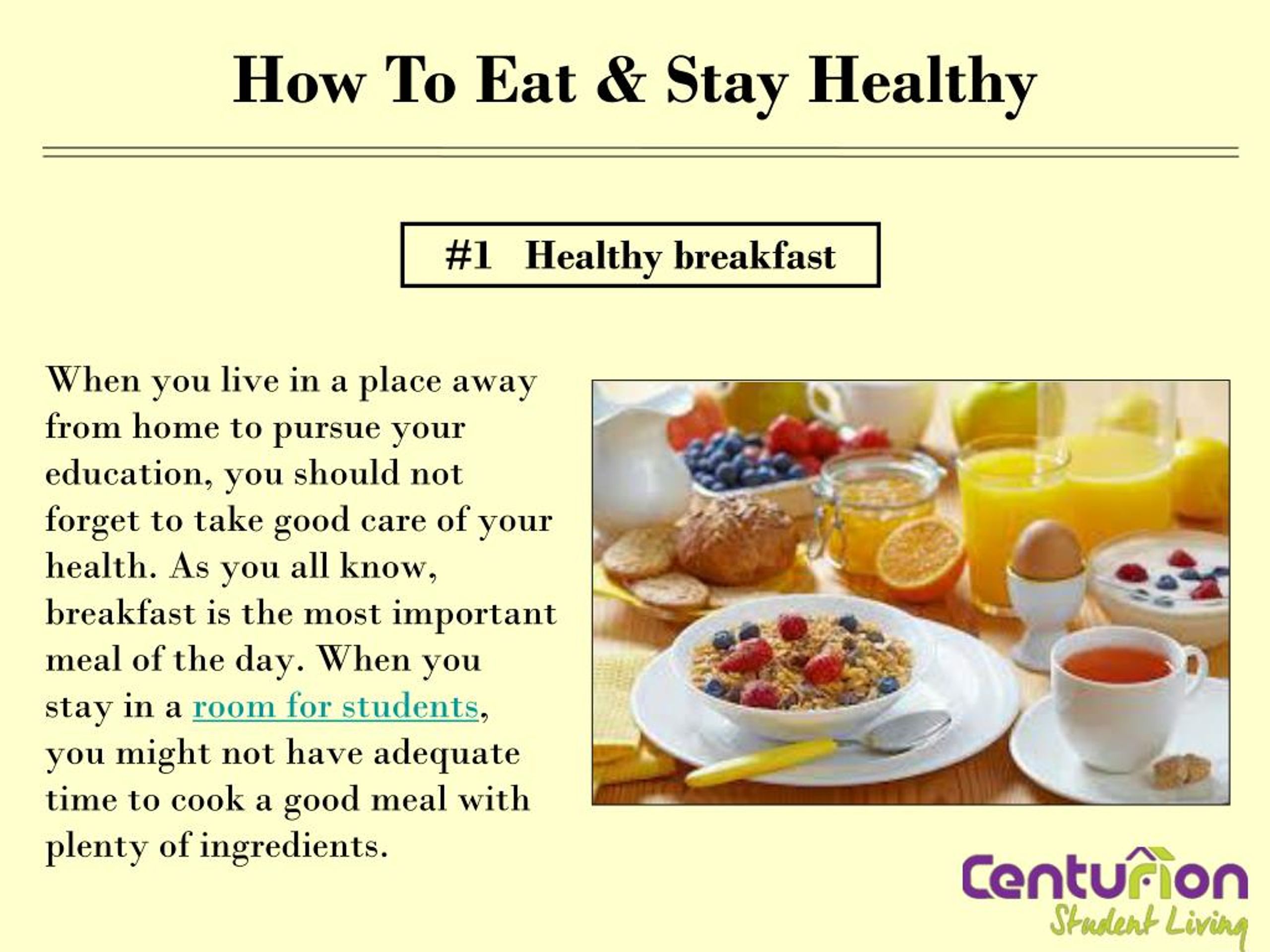 In conclusion, choose a trendy haircut that will save you time on styling.
In conclusion, choose a trendy haircut that will save you time on styling.
4. Take care of your skin
How to look beautiful without makeup? Healthy, smooth and clear skin does not need to be masked with foundation! Be sure to wash your face with a special cleanser in the morning and evening, and then apply a cream or lotion that suits your skin type. Proper cleansing of the skin is half the success!
5. Remove excess
Use a white clay mask at least once a week to unclog pores, making them smaller and less visible. If your skin is not too thin and sensitive, perform another ritual once a week. This is a delicate peeling based on acids, which will renew the top layer of the skin and make its relief more even, and the complexion more healthy. With this approach, it is quite possible to be beautiful without makeup!
6. Solve specific problems
There are girls who find it easier to mask their shortcomings than to overcome them. They cannot imagine their life without makeup, because they believe that only with it they can look beautiful. But no skin problem should be left unattended. Apply products with salicylic acid on pimples, soothe redness with products with natural oils, fight peeling, moisturizing and protecting the skin. “Self-pass” is not a method!
They cannot imagine their life without makeup, because they believe that only with it they can look beautiful. But no skin problem should be left unattended. Apply products with salicylic acid on pimples, soothe redness with products with natural oils, fight peeling, moisturizing and protecting the skin. “Self-pass” is not a method!
7. Wear sunscreen
We don’t mind freckles, but age spots, dryness, and premature aging are unlikely to contribute to attractiveness. All these consequences come from the love of sunbathing. It’s one thing to strive to look beautiful without makeup, it’s another thing to hope that a tan will hide any flaws and make you irresistible. In winter, spring, summer and autumn, before a walk or on working days, on a cloudy rainy day or a sunny morning… In general, always and again always your skin should be protected from ultraviolet radiation. Korean women, for example, do not leave the house without an umbrella at all!
8.
 Sleep well
Sleep well
Trite, but it works! Skin looks healthy if you sleep at least 7 hours a day. The optimal sleep schedule for her is 8-9 hours between 23-00 and 9-00. Sleep more and learn how to look beautiful without makeup.
9. Drink water
Also a bit of advice. But looking good without drinking enough fluids, with or without makeup, is simply impossible. No moisturizer will restore your skin to smoothness, firmness and radiance.
10. Curl or grow lashes
No mascara will make your lashes open, long, and expressive look like a curler or (even better) eyelash extension does this task. You can do without daily makeup and be beautiful at the same time. Natural, thin, silky and fluffy eyelashes make your eyes look bigger, look deeper, and the image as a whole is more interesting!
11. Take care of your lips
Use a lip scrub or gommage regularly to get rid of flaking. Moisturize them with balms and oils and be sure to lubricate them with a protective agent before going outside.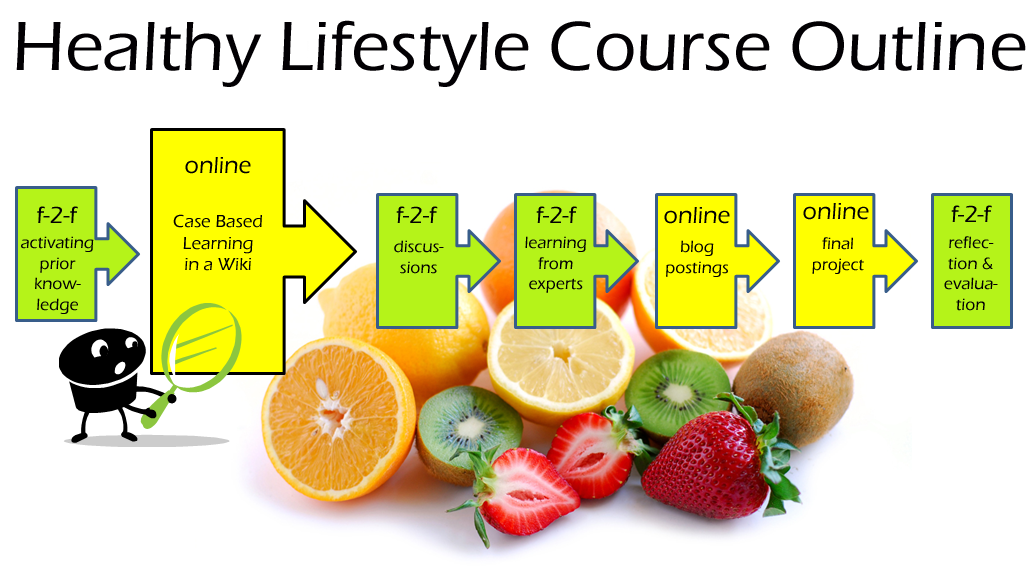 Once you start following these simple steps, you will learn how to look beautiful without lip makeup. Soft and seductive, they don’t need lipstick!
Once you start following these simple steps, you will learn how to look beautiful without lip makeup. Soft and seductive, they don’t need lipstick!
12. Whiten your teeth
Your smile will make you much more attractive than any decorative cosmetics! Of course, if your teeth are healthy, they have white enamel and no plaque. Without these conditions, it is problematic to look good, no matter how hard you try to compensate for the shortcomings with skillful makeup. If you are embarrassed by going to the dentist or you have sensitive teeth that are not suitable for clinical whitening methods, try the most effective toothpastes or home methods – they work great too!
13. Add some color
If you can’t do without makeup at all, but want to reduce it and still look beautiful, try this technique. A light (very, very light!) tan immediately makes the skin look healthier. Use a bronzer, just don’t forget to carefully follow the instructions, apply the product not only on the face, but also on the neck, décolleté and ears – the result will please you!
14.


